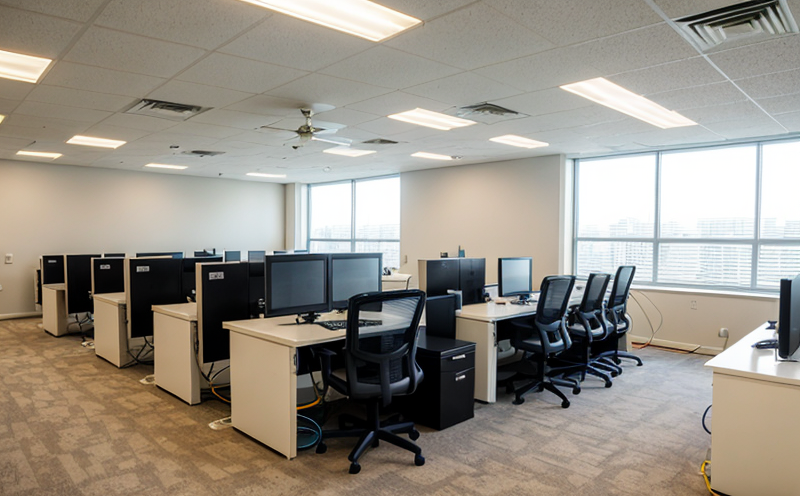UL 1993 Certification Testing of Compact Fluorescent Lamps
The UL 1993 standard is a pivotal requirement in ensuring that compact fluorescent lamps (CFLs) meet stringent energy efficiency and safety standards. This certification ensures that CFLs are designed to operate efficiently while also being safe for consumer use, which is critical in today's market where sustainability and compliance are key considerations.
UL 1993 testing encompasses a series of rigorous procedures aimed at evaluating the performance characteristics of CFLs such as power factor correction, ballast efficiency, and lamp efficacy. These tests provide manufacturers with essential data to refine their products for optimal energy savings without compromising on safety or quality. Compliance with UL 1993 is not just about meeting regulatory requirements; it also positions a brand favorably in the market, demonstrating commitment to sustainability and consumer satisfaction.
The testing process involves several stages, including initial lamp preparation, electrical load application, and subsequent measurement of various parameters. This includes monitoring current draw during operation, evaluating light output stability over time, and assessing the effect on power quality. Each step is meticulously documented and analyzed against UL 1993 requirements to ensure accuracy and reliability.
Once testing is complete, detailed reports are generated that include all measured data points alongside compliance status. These reports serve as crucial references for both internal product development teams and external stakeholders like distributors and retailers. They also form the basis for marketing materials highlighting a brand's dedication to environmental responsibility and regulatory adherence.
The importance of UL 1993 certification cannot be overstated, especially in an era where energy conservation is a priority. By adhering to these standards, manufacturers can ensure their products contribute positively towards reducing global carbon footprints while maintaining high levels of performance and reliability. This commitment translates directly into enhanced brand reputation among environmentally conscious consumers.
In summary, UL 1993 certification testing offers more than just compliance; it represents a proactive approach toward creating efficient lighting solutions that benefit both users and the environment. As sustainability continues to gain traction globally, this form of certification will undoubtedly become increasingly important for those seeking to differentiate their offerings in competitive markets.
Applied Standards
The UL 1993 standard is primarily based on international guidelines such as the International Electrotechnical Commission (IEC) and National Electrical Manufacturers Association (NEMA). Specifically, it aligns closely with IEC 60081-14, which provides specifications for general requirements and test methods applicable to compact fluorescent lamps. This alignment ensures that UL certification is not only relevant but also consistent with global best practices.
- IEC 60081-14: Provides detailed procedures for evaluating the performance characteristics of CFLs, including ballast efficiency and power factor correction.
In addition to these specific standards, UL 1993 incorporates broader industry expectations regarding energy efficiency and safety. It mandates thorough testing across multiple scenarios to ensure that lamps perform consistently under real-world conditions before being approved for market release.
By adhering strictly to these internationally recognized guidelines, laboratories like ours provide clients with confidence knowing their products are rigorously evaluated against global benchmarks rather than localized criteria. This approach fosters trust among end-users and contributes significantly to maintaining high standards within the lighting industry.
Why Choose This Test
Selecting UL 1993 certification testing for your compact fluorescent lamps (CFLs) is a strategic decision that can have far-reaching benefits. Firstly, it ensures compliance with stringent regulatory requirements set forth by organizations such as Underwriters Laboratories (UL). Failure to comply could result in product recalls or even legal action against non-compliant manufacturers.
From an operational standpoint, obtaining UL 1993 certification enhances the reputation of your brand among consumers who prioritize energy efficiency and sustainability. In today’s eco-conscious market, having such certifications can be a powerful selling point that differentiates your products from competitors without similar credentials.
The test also guarantees consistent quality across all batches produced by your manufacturing facility. By subjecting each batch to rigorous testing according to UL 1993 standards, you eliminate inconsistencies that might otherwise arise due to variability in production processes or raw materials sourcing. Consistent performance is crucial for maintaining customer satisfaction and trust.
Furthermore, successful completion of this certification process indicates adherence to best practices throughout the entire design and manufacturing lifecycle of your CFLs. This not only improves product reliability but also enhances overall brand image by demonstrating commitment to excellence in every aspect of production.
In conclusion, investing in UL 1993 certification testing is an investment in both immediate success and long-term growth. It helps establish credibility within the industry while ensuring ongoing quality control measures that protect your reputation against potential risks associated with non-compliance or subpar product performance.
Competitive Advantage and Market Impact
The competitive landscape for compact fluorescent lamps (CFLs) is fiercely competitive, driven by increasing demand for energy-efficient lighting solutions. In this environment, UL 1993 certification offers significant advantages that can set your product apart from others:
- Market Differentiation: Certification provides a clear signal to consumers and businesses about the quality and reliability of your CFLs.
- Regulatory Compliance: By adhering strictly to UL 1993, you ensure that your products meet or exceed all relevant regulatory requirements, avoiding costly penalties and product recalls.
- Sustained Quality Control: The rigorous testing process used during certification helps maintain consistent quality across all batches produced by your manufacturing facility.
In the broader context of market impact, obtaining UL 1993 certification can lead to increased sales volume and customer loyalty. Consumers increasingly value sustainable products, making this certification a valuable asset in attracting environmentally conscious buyers. Additionally, it can enhance partnerships with key industry players who prioritize compliance and quality.





